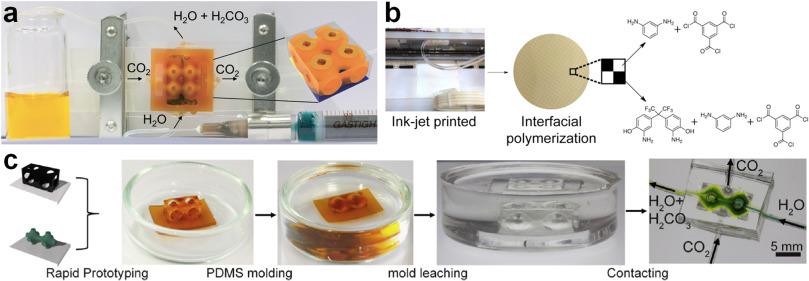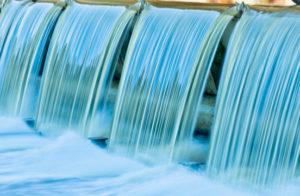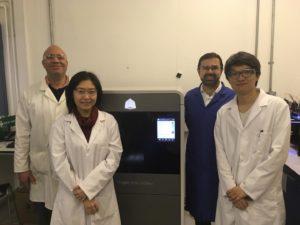 We know that 3D printing has many uses in a variety of fields, from medical to education to artwork; it can create almost any geometrically complex shape you can dream of, in a range of materials. But one application for 3D printing that is still relatively new is its use in separation membrane engineering. Researchers at the University of Bath believe that further development of 3D printing techniques could be the key to the advancement of membrane capabilities and technology. This is being studied as part of the University’s Centre for Advanced Separations Engineering (CASE), and a paper was just published in the Journal of Membrane Science, titled “Perspective on 3D printing of separation membranes and comparison to related unconventional fabrication techniques.” Put your seat belt on: it’s time to get insane in the membrane! (Literally the only Cypress Hill song I know.)
We know that 3D printing has many uses in a variety of fields, from medical to education to artwork; it can create almost any geometrically complex shape you can dream of, in a range of materials. But one application for 3D printing that is still relatively new is its use in separation membrane engineering. Researchers at the University of Bath believe that further development of 3D printing techniques could be the key to the advancement of membrane capabilities and technology. This is being studied as part of the University’s Centre for Advanced Separations Engineering (CASE), and a paper was just published in the Journal of Membrane Science, titled “Perspective on 3D printing of separation membranes and comparison to related unconventional fabrication techniques.” Put your seat belt on: it’s time to get insane in the membrane! (Literally the only Cypress Hill song I know.)
According to a news release from the university, this research is the first time the properties of different 3D printing techniques have been assessed in the use of membrane fabrication. We’ve written about 3D printing membrane technology before, even back in 2014, when Nano Sun was researching the application, but this paper goes far more in-depth in investigating the available techniques. The point of the paper is that through development, 3D printing can eventually offer preparation techniques that will be able to produce membranes in differing types, designs, and shapes, which, according to CASE, can be better “designed, fabricated, and controlled than any other membrane fabrication method currently available.”

Fig. 3. from the paper: (a) 3D-printed PDMS membrane contactor. Gas flows horizontally from left to right while the bromothymol blue pH indicator is pumped vertically from the bottom to the top through the contactor. The colour change of the pH indicator from blue to yellow indicates the CO2 transport over the membrane. (b) Ink-jet coating of membrane. Checkerboard patterns of fluorinated diamine were printed on a pre-soaked ultrafiltration substrate followed by conventional interfacial polymerization of the polyamide. (c) Preparation of 3D PDMS membranes via a sacrificial resist. Step-by-step fabrication for the Schwarz-P geometry: rapid prototyping of the sacrificial mould, backfilling of the mold with PDMS followed by thermal curing, alkaline removal of the mold material and TPMS membrane under steady-state condition. The colour change of the pH indicator from blue to yellow again indicates the CO2 transport through the PDMS membrane.
So, what exactly is a membrane? It is “a semi-permanent selective barrier that separates the molecules in a mixture within a gas or liquid into two streams, a key example of this being the separation of salt from water for desalination using reverse osmosis membranes.” In laymen’s terms, they’re basically just flat, thin, sheet-like materials. At the moment, membranes are mostly restricted to tubular/hollow fiber and flat surface configurations, since the current manufacturing processes are rather limiting. This results in a limited capability of membranes being able to separate certain properties.
CASE, which is based in the university’s Department of Chemical Engineering, is Europe’s largest academic group advancing applied and fundamental science, and technological separation developments. Their website describes their research as putting a “particular emphasis on understanding the relationship between membrane properties.” The paper provides background information on the many available 3D printing technologies and applications in membrane engineering, evaluates the advantages and drawbacks of the different printing methods, and highlights the potential development of more accurate membrane fabrication in the future.
“This review is the first to explore the possibility and challenges of using 3D printing for producing separation membranes,” said Dr. Darrell Patterson, Director of the Centre for Advanced Separations Engineering at the University of Bath. “Although 3D printing technology is not quite well enough developed to yet produce large scale membranes that will be cost competitive with existing products, this work does signal what the future possibilities are with 3D printing, to produce membranes beyond that which are currently available, including controlled complex pore structures, integrated surface patterns and membranes based on nature.”
The research paper starts all the way back with the invention of the first printing press in the 1440s, and quickly brings the reader up to speed, getting to 3D printing and additive manufacturing in the same paragraph: “While AM may be a more general term suitable to describe the technique, 3DP has gained popularity over time and has now expanded to encompass a wider variety of techniques including, stereolithography (SLA), sintering and extrusion-based processes.”
 It goes on to explain that the use of this technology in separation membrane printing is a fairly new and exciting concept, and charts out the materials, specifications, advantages, and disadvantages of additive manufacturing and 3D printing by multiple manufacturers, including Stratasys and voxeljet. It notes that all specifications were obtained via manufacturers’ websites. The end of the paper concludes that “current printing materials are limited, restricted to specific AM technologies and have little overlap with the current materials used for membrane fabrication…Future development in the AM field should not only focus on new printing material development, but also on expanding the use of existing printing materials to a wider range of AM technology.”
It goes on to explain that the use of this technology in separation membrane printing is a fairly new and exciting concept, and charts out the materials, specifications, advantages, and disadvantages of additive manufacturing and 3D printing by multiple manufacturers, including Stratasys and voxeljet. It notes that all specifications were obtained via manufacturers’ websites. The end of the paper concludes that “current printing materials are limited, restricted to specific AM technologies and have little overlap with the current materials used for membrane fabrication…Future development in the AM field should not only focus on new printing material development, but also on expanding the use of existing printing materials to a wider range of AM technology.”
If we can eventually increase the capabilities of membrane separation and printing, many industries could see significant, positive implications, including in the water industry, and purification specifically. If new membranes could be designed and printed, with “designer pores and surface shapes that enhance micro-mixing and shear flow across the membrane surface,” they could essentially reduce the energy associated with cleaning blockages. Up to 15% of globally used energy is from the purification and separation of products like fine chemicals, fresh water, and gases, and 40-70% of industry capital and operating costs are used up on these processes. Membrane technology could offer more sustainable molecular separations and lower energy, decreasing the carbon footprint and industry costs. Discuss in the Separation Membrane forum at 3DPB.com.
Subscribe to Our Email Newsletter
Stay up-to-date on all the latest news from the 3D printing industry and receive information and offers from third party vendors.
Print Services
Upload your 3D Models and get them printed quickly and efficiently.
You May Also Like
Havaianas Collaborates with Zellerfeld to Launch 3D Printed Flip-Flops
The shoe of the summer is undoubtedly the flip-flop. Easy on, easy off, your feet won’t get sweaty because there’s not much material, and they’re available in a veritable rainbow...
UCLA Researchers Develop 3D Printed Pen that May Help Detect Parkinson’s Disease
Diagnosing Parkinson’s disease is difficult. Often, early symptoms of the progressive neurological condition may be overlooked, or mistaken for signs of aging. Early diagnosis can help save lives and improve...
Printing Money Episode 30: Q1 2025 Public 3D Printing Earnings Review with Troy Jensen, Cantor Fitzgerald
Printing Money is back with Episode 30, and it’s that quarterly time, so we are happy and thankful to welcome back Troy Jensen (Managing Director, Cantor Fitzgerald) to review the...
Heating Up: 3D Systems’ Scott Green Discusses 3D Printing’s Potential in the Data Center Industry
The relentless rise of NVIDIA, the steadily increasing pledges of major private and public investments in national infrastructure projects around the world, and the general cultural obsession with AI have...


































